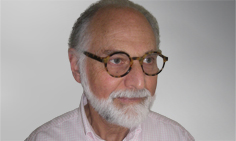AN article in MJA InSight last year about the causes of sudden infant death syndrome stimulated some interesting debate and several questions.
My article suggested that an infection model may provide some answers about sudden infant death syndrome (SIDS). This was based on my work with a team that conducted an investigation into the gut microbiome of babies dying from SIDS, and live healthy babies.
The mystery of what causes SIDS prompted several readers of my previous article to raise questions about the theory and about SIDS, indicating high interest is this perplexing condition.
One question was why we don’t see evidence of septicaemia in babies who died from SIDS while they are awake. Indeed, there are reports of babies dying under observation but, as far as I am aware, the states of consciousness were not reported.
Given that babies in the SIDS age range spend the majority of their time asleep it is not surprising that these events occur during sleep. Septicaemia leads to hypoxaemia and therefore central nervous system (CNS) depression, and hence sleep. This could explain the apparent association between sleep and SIDS.
A suggestion that the brainstem is a primary contributor to SIDS lacks convincing clinicopathological evidence. Secondary brainstem failure due to hypoxaemia might be more plausible. I prefer Occam’s razor and a single relatively uncomplicated cause which is congruent with the clinical findings, physiology, pathology and epidemiology of SIDS.
One reader linked the results of our study findings to naturopathic and Hippocratic thinking but I struggle to make this link. While the external environment is important to health, the internal environment is probably just as important.
Questions were raised about Staphylococcus aureus infection, which could be related to the fact that premature babies have an increased risk of SIDS. Premmie babes often miss beneficial breast/maternal contact.
As yet, we do not know if maternal gut flora during normal vaginal birth is associated with SIDS or whether it is later exposure to significant pathogens carrying particular colonisation and virulence factors that invokes the risk of SIDS.
Caesarean section delivery does not show an increased risk of SIDS, and this lack of association indicates later colonisation is important based on SIDS age peak and diminishing maternal antibody protection.
Ways of acquiring S. aureus are multitudinous, including from the hands of health care workers.
There is also an increased risk of SIDS associated with sofa and parental bed sleeping. These surfaces are contaminated by high numbers of S. aureus and coliforms. Placing a baby prone would conceivably increase its risk of being colonised by bacteria on the sleeping surface.
Unfortunately, published research looking at bed sharing and co-sleeping does not sufficiently analyse why the infant was in the parent’s bed or co-sleeping elsewhere.
A systematic review supports the interpretation that, in a majority of cases, bed sharing on the night of the last sleep came about because the baby was unsettled or unwell, possibly indicating subtle symptoms of infection.
Some researchers have suggested that alcohol and drug used by co-sleeping parent(s) had led to overlaying as a cause of SIDS. Alcohol and drug use could also cause lessened awareness in the co-sleeping parent that might explain a failure to notice subtle symptoms of illness in a baby.
Overlaying with consequent asphyxiation as the explanation of the risk factor of bed sharing therefore needs re-examination.
How should the finding of a significant pathogen in a sterile site in a baby whose death occurred in the parental bed be interpreted?
Sepsis in babies is difficult to diagnose clinically, just as it is at postmortem, without proper microbiology with unbiased interpretation.
I have described the differentiation between the intrathoracic petechiae observed in asphyxia and SIDS, and it has been well described elsewhere, yet these findings are largely ignored by mainstream researchers and are not used in differentiating asphyxia from SIDS.
The entitlement to submit a hypothesis on the cause of SIDS is not the reserve of paediatric pathologists.
Professor Paul Goldwater is a consultant in clinical microbiology and infectious diseases at SA Pathology, at the Women’s and Children’s Hospital, Adelaide.

 more_vert
more_vert